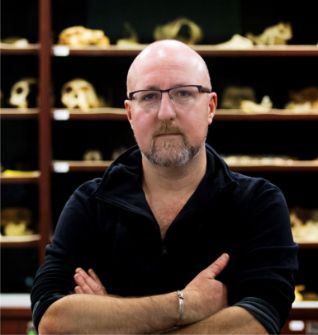
Patrick Randolph-Quinney
Assoc. Prof. Northumbria University
Ph. D.
Patrick Randolph-Quinney
Patrick is Associate Professor of Forensic Science at Northumbria University, UK. His broad interests concern the application of multi‐disciplinary forensic taphonomy into both current medico‐legal practice and the Evolutionary Anthropology of the deep past. He has a background in palaeoanthropology and archaeology, and spent much of his early academic life working on the biological and cultural evolution of the genus Homo during the Middle Pleistocene, a critical period that precedes the evolution of our own species and the advent of modern behaviours. In recent years he has been working in the field of forensic anthropology and human identification. He has extensive casework experience in both forensic anthropology and archaeology in the UK and sub‐Saharan Africa, including archaeology of fatal fires.
He has research interests in the evolution of skeletal disease, diagnostic imaging using micro-computed tomography, human and animal decomposition processes, osseous taphonomy, particularly differentiation of sub‐aerial and sub‐surface processes, trauma analysis, ichnotraces, and the application of digital methods in the analysis of spatial taphonomy and the decomposition process. His forensic research focuses on aspects of human identification. His main forensic specialisation is taphonomy (peri and post-mortem processes) with an emphasis on sub-surface burial processes, trauma analysis, and the recovery and analysis of burnt human remains.
He has also continued research into the human evolutionary process, working at the sites of Malapa and Rising Star in South Africa. His role in the Rising Star project has been to apply skills from modern forensic taphonomy to understand the context, decompositional environment and mortuary behaviours of Homo naledi. His research also encompasses the effects of disease and trauma on the skeleton, and he has most recently coordinated multi-disciplinary research teams investigating the earliest evidence for neoplastic disease (both tumours and cancers) in the hominin fossil record.
He is an experienced field worker and conducts fieldwork in Middle Pleistocene palaeo-archaeological deposits in the Limpopo region of South Africa, and is Co-Director of the Makapansgat Archaeological Landscape Project.
He is currently supervising a number of PhD projects looking at differing aspects of the forensic and palaeosciences.